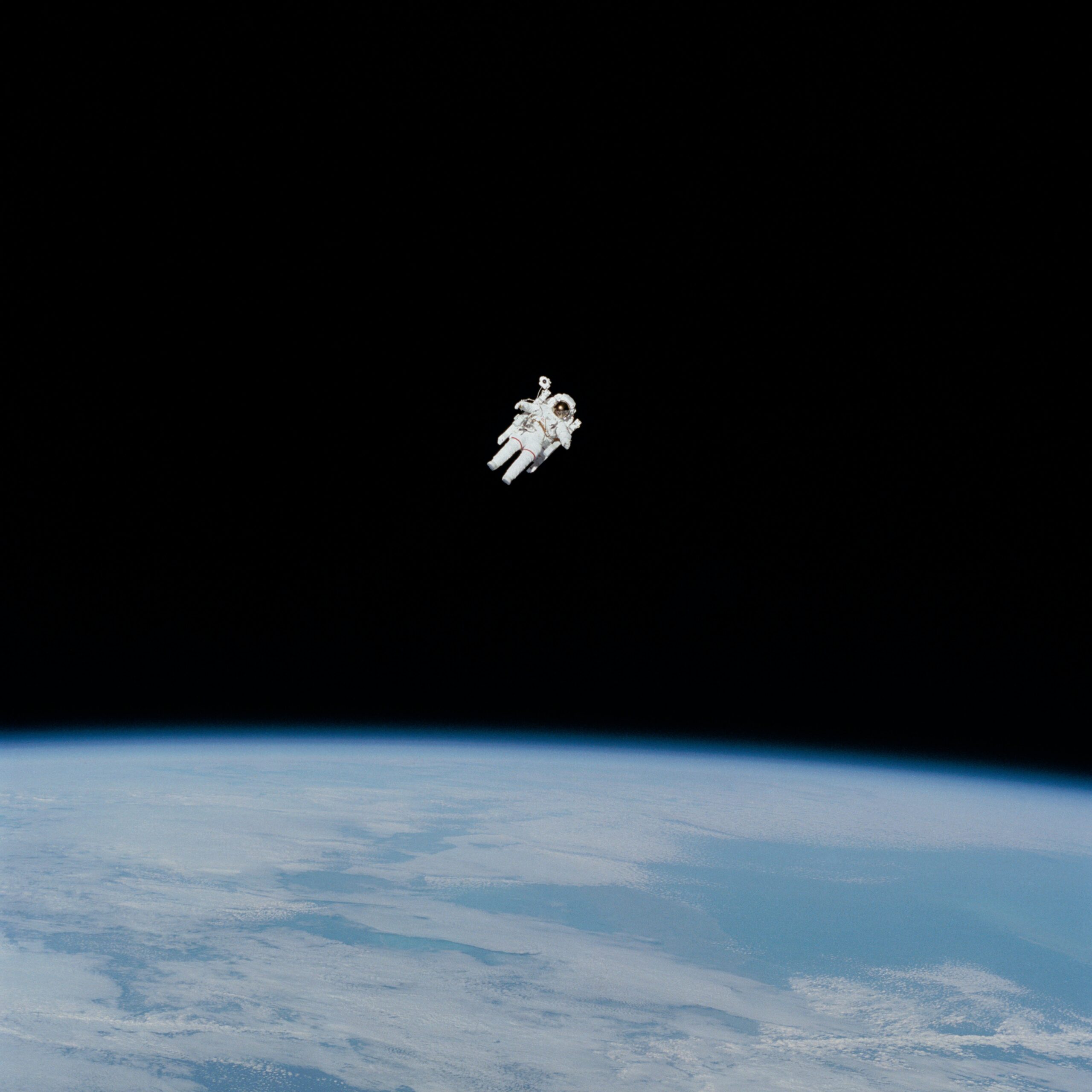In July 2020, a rover named Perseverance will blast off towards Mars to hunt for evidence of extraterrestrial life. This is just the latest in a series of missions stretching back decades to probe the mysteries of the Red Planet. NASA scientists share images and data from these missions with the public so that we may explore this rich and beautiful world alongside them.
On this field trip Friday, we’re leaving Earth behind on a journey of more than 100 million miles to Mars. We’ll see stunning imagery of this planet from orbit, learn about the daredevil maneuvers needed to land cargo safely, and roam across dunes and mountains to piece together the geological history of Mars, including a time when rivers flowed across its surface. Prepare for an out-of-this-world experience!
The View from Orbit
Pack plenty of entertainment on a trip to Mars because it takes about 9 months to get there. The wait is worth it, even just for the spectacular view from orbit. Since August 2005, the Mars Reconnaissance Orbiter has been taking surreal aerial photographs with the most powerful telescope ever sent to another planet. For its 10 year anniversary, mission operators at NASA’s Jet Propulsion Laboratory (JPL) released a highlight reel showcasing the rich variety of Martian features, from steep canyons to majestic dunes. It even caught an avalanche in progress!
https://www.youtube.com/watch?v=bdHkgtLgcSY
Landing
After scoping out Mars from above, it’s time for a tense moment: landing on the surface. Enter the atmosphere too quickly or without adequate protection and the lander can slam into the ground in a fiery demise. For relatively light payloads like the Spirit and Opportunity rovers, deploying inflatable cushions will do the trick. However, NASA has had to use a fantastically complex procedure for heavier payloads like the Curiosity and forthcoming Perseverance. It involves pyrotechnic devices, swift vehicle configurations like something out of a Transformers movie, a heat shield, parachutes, rockets—all automatically controlled with a gigantic software program, and all happening within 7 minutes. Needless to say, a lot can go wrong.
Check out this video that recreates that nerve-racking moment:
https://www.youtube.com/watch?v=h2I8AoB1xgU
Major Geological Features
Geology is an important lens through which we investigate Mars. We’ll highlight some of Mars’ most striking features and learn the stories of how they formed using geological clues. At each location, you can view the images using different kinds of data: elevation, visible light, and infrared light, each giving a unique perspective of the surface.
Olympus Mons and other volcanoes https://www.google.com/mars/#lat=18.46757&lon=-133.922874&zoom=6&q=olympus%20mons
This shield volcano is over 16 miles tall — larger than the state of Arizona and the largest in the entire solar system. How could such an enormous feature be possible? Check out this clip that shows how Mars’ unique planetary characteristics played a role in the formation of Olympus Mons and other gigantic volcanoes. https://youtu.be/Cww3yVQpcjY
Valles Marineris
https://www.google.com/mars/#lat=-11.814292&lon=-65.284086&zoom=5
This massive canyon appears like a scar across the surface of Mars. At over 2,500 miles long, 120 miles wide, and 23,000 feet deep, this is one of the largest canyons in the solar system, second only to the rift valleys on Earth. There are still many hypotheses as to how Valles Marineris formed, but what we do know for certain is that three factors played a role: volcanic activity, flowing water, and a thin planet crust. See how Valles Marineris compares to the Grand Canyon:
https://youtu.be/vkbap5IlMQI
Evidence of flowing water
Dry Riverbeds
https://www.google.com/mars/#lat=-40.442737&lon=-271.912102&zoom=7
https://www.google.com/mars/#lat=25.324116&lon=-424.061189&zoom=6
Gale Crater
https://www.google.com/mars/#lat=-5.916003&lon=-583.040320&zoom=8&q=gale%20crater
Wherever we find water on Earth, we find life. Scientists have wondered if the same is true on Mars ever since we’ve begun exploring there. Dry riverbeds seen from orbit hinted at a much wetter past, prompting NASA to send the Curiosity rover to investigate further. The rover landed at Gale crater in 2012 and quickly found evidence that the crater was the site of an ancient lake, proving Mars would have been habitable in the distant past.
Check out this description of one of the best pictures Curiosity took from the surface:
https://www.youtube.com/watch?v=X2UaFuJsqxk
In this simulator, you can see all the pictures Curiosity has taken along its 12-mile journey: https://accessmars.withgoogle.com/
Life?
More recently, scientists have even discovered that liquid water exists on Mars today! With evidence that liquid water flowed on the surface of Mars, scientists hope the Perseverance rover will find evidence of life. If evidence of life can be found, we will then begin to understand how life might form all over the Universe.
https://youtu.be/gksddX9N26w
Our red neighbor holds many secrets to discover. Using cutting edge robotics, sensors, and creative solutions, NASA and other space agencies are putting together the puzzle that is the history of Mars. Lucky for us, we can tag along virtually… until we visit for ourselves…
If you’d like to explore Mars further, check out these great resources and interesting discoveries:
SciShow Kids: Should We Go to Mars? https://www.youtube.com/watch?v=vphJ6WyuxGk
NatGeo Mars 101: https://youtu.be/D8pnmwOXhoY
The Job of Designing Spacecraft for Mars: https://www.youtube.com/watch?v=X_7QkQCHezc
Dry Ice Dune Surfing: https://youtu.be/s-J7L59yifU
Curiosity Finds Strange Rock in Gale Crater: https://www.youtube.com/watch?v=aanN6fbNhqc



